[Occasionally, Greg splits up his posts because they run long, something we don’t care too much about here, but I’m going to keep this in two pieces, because it does work pretty well that way. You can find the first part, from 25 February 2006, here, in which you can find Brad Curran going off the rails a bit in the comment section. Brad was always fun. I also love how concerned Greg was in the early days to stick to his Friday schedule and how apologetic he was when he didn’t hit it. It’s ok, Greg, we didn’t mind! Anyway, Enjoy!]
Last week I said I was going to talk about the new stuff in my comic-shop box, but honestly, most of it was ‘meh’ — just the contractual obligation stuff until my pull request expires at the shop. And I already did the column about pruning the ‘meh’ stuff off my list.
As usual, the comics acquisitions that really got me excited were the older items arriving in the mail. In particular, the Showcase Presents Jonah Hex and the Essential Moon Knight. These books rocked my world and I recommend them unreservedly. Especially if you get them online discounted thirty to fifty percent with free shipping.
But I already talked about Moon Knight, too, and lots of people talked about Hex when it came out. What struck me, this week, was all the great stuff that probably will NEVER get an Essential or a Showcase or a trade collection of any kind, because of rights issues. Now, traditionally, fans have always sneered at licensed books, and honestly I’ve never really understood that. Licensed books tying in to some kind of TV show or movie have very often put out some really amazing stuff, and sometimes, as with Carl Barks’ duck books or DC’s The Batman Adventures, far surpassed the original material. So I thought I’d call your attention to a few more obscure examples of those. Well worth it if you are surfing eBay or Mile High, or snooping through back issue bins, or wherever you get hooked up with the good old stuff, because the chances are vanishingly small they’ll ever show up collected in paperback.
What brought it up was a message board discussion I was having with some folks about the comics version of the Six Million Dollar Man. Now, I admit up front that I am a huge ol’ geek for Steve Austin’s adventures — the bionic one, that is, not the wrestler — and his distaff [Edit: ‘distaff’? Really, sir?] counterpart, The Bionic Woman. Jaime Sommers and Steve Austin were the Buffy and Angel for my generation of nerds. There were all sorts of licensing tie-ins, books, action figures, lunchboxes, and of course, comics.
The comics were published by Charlton, who frankly were not known for putting out good stuff. But a great deal of the bionic comics were jobbed out to Neal Adams’ Continuity Studios, and the black-and-white magazine books were enormous fun. The stories were just okay — about on a level with the show — but the art was breathtaking. At the time Continuity had on its roster in addition to Adams: Terry Austin, Joe Barney, Joe Brozowski, Rick Bryant, Karin Daugherty, Dick Giordano, Klaus Janson, Bruce Patterson, Carl Potts, Mark Rice, and Josef Rubinstein. Any or all of whom worked on these books at one time or another. The credits are simply “Continuity Associates,” so it’s an interesting exercise for the scholar, figuring out who did what. It’s an art showcase book really. But also fun for those that, like me, remember the show fondly. The nine color comics Charlton put out were pretty forgettable; though if you are a Joe Staton completist, he did do work on them, though not his best by a long shot. The magazine is the one you want — ran seven issues in all and the first five are the good ones, from Continuity.
Another licensed book I remember fondly was Gold Key’s Dark Shadows. The books Gold Key put out were almost all licensed properties, based on some cartoon or TV show, but often the book would catch on and outlast the TV show by a fair margin. Gold Key’s Twilight Zone and Dark Shadows books both went years longer than their TV counterparts, and in Dark Shadows‘ case, it was vastly more entertaining than the show. The comic had an unlimited special-effects budget, and though Gold Key’s policy kept it from getting too nasty or gory, with Arnold Drake and John Warner doing the scripting there was no rule against weird, and weird was what Dark Shadows the comic was all about.
It already incorporated vampires and werewolves and ghosts from the TV show, but under Drake and Warner we got otherdimensional travel, parallel worlds, and all kinds of other psychedelia. Imagine my disappointment decades later when I finally got to see the original show and saw that it was basically a soap opera. I wanted the hell-for-leather, acid-trip madness I got from the comics; aficionados will no doubt disagree, but for my money, the show was pale, drab, and glacially slow in comparison to the comic. The art by Joe Certa was just okay, though the painted covers were always exquisite on the Gold Key books. Sadly, neither I nor the GCD have any idea who did them.
Star Trek, of course, was a huge success story in comics; there were nice runs at DC, Gold Key, and Wildstorm, and you can find trades collecting many of those. But, you know, there were some very cool Trek books put out in the 1990’s from Marvel as well and sadly, I don’t think those are getting an Essential any time soon. They didn’t last long, which is a pity, because I think they were easily the most innovative approach anyone ever took to a comics adaptation. The mandate was, “Let’s not give them what they can get already.” So instead of just doing straight adaptations, you got interesting forays into previously-unexplored territory like Starfleet Academy or my favorite, pictured below:
Since I am the resident geezer here, this should come as no surprise to anyone. But “The Menagerie” was one of my favorite episodes of the original Trek and here was a comic spun completely out of that episode. Plus my inner continuity nerd thrilled to the idea of finding out the ‘history’ of the original show. The book itself was a hoot, though as with all licensed books, to enjoy it you really have to have some affection for the original material. Since I fell in love with the ‘first’ version of the Enterprise from the moment I saw it, I swooned over Early Voyages, they had me at hello. Your mileage may vary. But I will say the art was an amazing tour-de-force from Patrick Zircher, managing to look both futuristic and 90’s tough while at the same time evoking the retro look of the original. This only ran 17 issues and you’ll probably find it in the three-for-a-dollar bin. I imagine you could have the whole run for under cover price. Worth checking out.
Another geezer property close to my heart was Marvel’s black and white magazine book, Planet of the Apes. This was another one of those books where Doug Moench proved to be the MVP go-to writer of the 70’s Marvel Bullpen — he did some great work on this book, ably assisted by Herb Trimpe, Alfredo Alcala, and Mike Ploog on the art chores.
The format for the book was very cool: one story would be an installment adapting the films (they eventually got through all five) and then the other story would be an original, and the original stuff was the fun part. Moench pulled out all the stops here, and, really, if you had already seen the movies and the TV show then this was the only new stuff going. Marvel reprinted the movie adaptations as a standard color comic under the title “Adventures on the Planet of the Apes” a couple of years later, but screw that — you want the magazines with the original material, the new stories. That’s where the fun is. This ran 29 issues, which was pretty respectable for the 70’s, and though it’s damnably hard to find and very expensive when you do find it, it’s worth your time.
For now that’s about enough … this is getting so long that I think I’m going to split it into two parts. I didn’t even get to the Millennium Publishing stuff or The Shadow Strikes! or any of the other half-dozen on my list. So I will leave it here until next Friday. Feel free to add any I missed down in Comments, though: the rule is that 1) it must be licensed, not original to comics; and 2) even if it’s not, there is very little possibility that it will get a Showcase or an Essential.
See you next week!
P.S. Yes, I know it’s really Saturday, but I WROTE it yesterday; I was looking up reference to illustrate it and making sure I had my credits right. Now that I know people actually READ this stuff I am trying to be more careful.

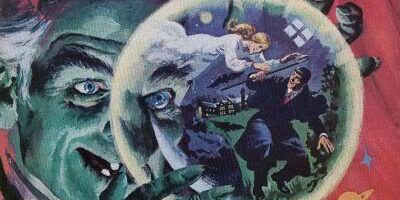
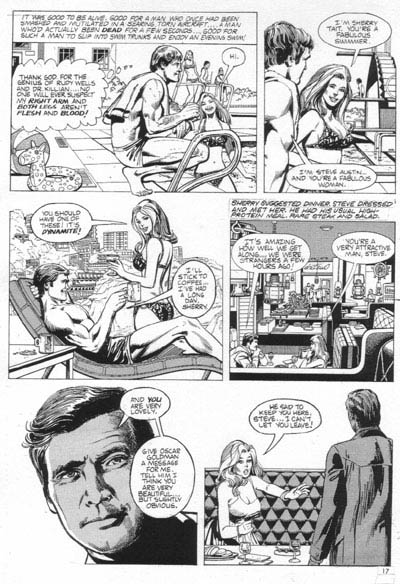
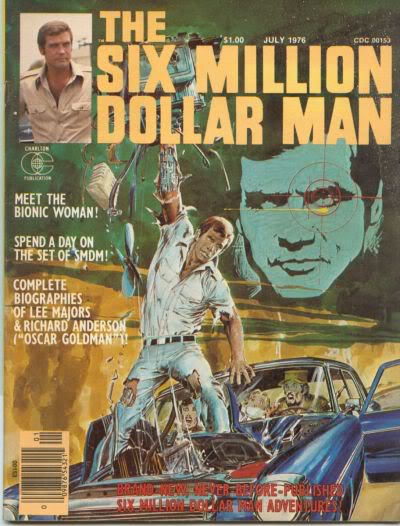
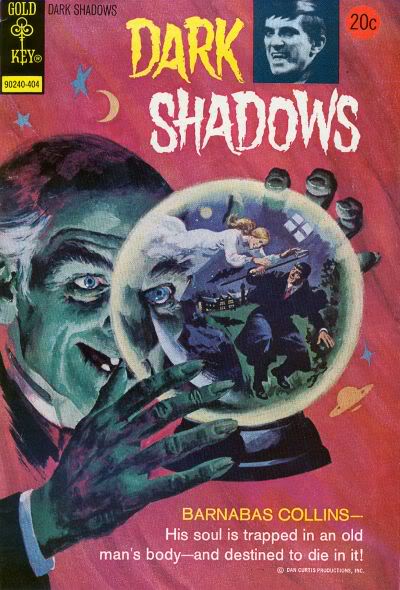
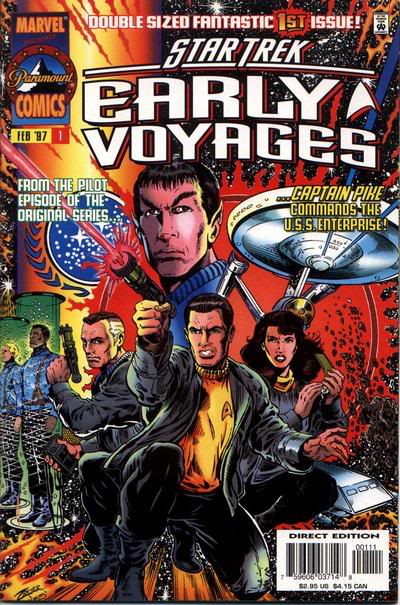
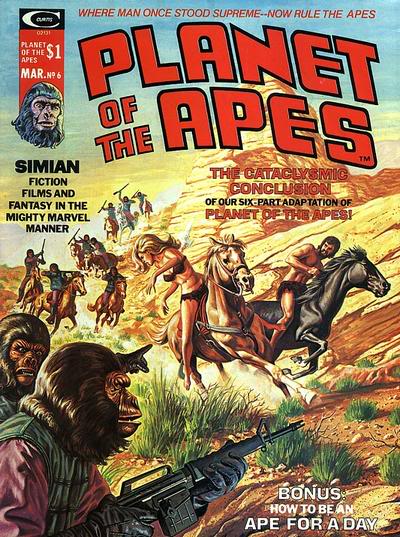
I wonder how that Star Trek: Early Voyages compares to Strange New Worlds. Apparently IDW reprinted it in a couple hardcover collections back in 2013.
I love an obscure licensed comic– especially ones unlikely to be reprinted due to rights issues. Just plucked an issue of Millennium’s Man from UNCLE out of a dollar bin the other day. And I’ve located my holy grail by completing Jack Kirby’s 2001: A Space Odyssey. But when I was younger my taste was more into Marvel’s Captain Planet series. Still need to track down the rest of Meteor Man and Mad Dog!
I remember Early Voyages as being fun, partly because Pike feels self-conscious he’s stepping into a legacy (“The Enterprise is synonymous with Captain Robert April — nothing anyone does will ever change that.”).
Their Starfleet Academy (set when Nog was attending from DS9) was also good.
I think Greg is painting Charlton with too broad a brush. They had plenty of bad stuff; but they had a pretty good percentage of really goo stuff, like their Phantom comics (especially the Aparo issues, the Pat Boyette material and most especially Don Newton’s run, at the end of the book). Their Space 1999 licensed comic had early work from John Byrne (when he wasn’t busy with Wheelie and the Chopper Bunch) and their various Hanna-Barbera titles were pretty decent, especially their Flintstones material. Their wider line had very good material, at different times, like the Action Heroes of the 60s, under Giordano’s editorship (with Steve Ditko cutting loose), E-Man in the 70s, plenty of their genre material (the war comics, their westerns and their horror books) was good to great and there were obscure gems, like Sanho Kim’s run on Yang and House of Yang, as well as Pete Morisi’s Vengeance Squad. Kim also did some fine work on the western book The Cheyenne Kid.
I picked up the occasional licensed comic, like Mark Evanier and Dan Spiegle’s work on the Marvel H-B licensed books, Gold Keys Man From UNCLE and Wild Wild West, their Flash Gordon run, the Tarzan material, etc. I also picked up the Millennium minis for UNCLE and Wild Wild West (which was really good and probably will never be reprinted), the Dark Horse early Aliens and Predator material (before they got beat into the ground), the Comico Jonny Quest series and the Space Ghost one-shot. William Messner-Loeb’s Jonny Quest were some of the best comics of the 80s.
Came here to say pretty much the same thing about Charlton, i.e., the company did in fact put out a lot of good stuff over the years. Heck, they get top marks from me just for E-man, to say nothing of Doomsday +1.
But Greg was really down on Charlton for some reason; I’d never read this column before, but once in an e-mail exchange, he mentioned how he was mystified that some people were nostalgic for Charlton because it was a such a “shit publisher.” My response was to kind of defensively point out some of the stuff you mentioned.
The printing quality really put me off from reading Charlton. I agree they did have some good stuff, as witness I recently bought TwoMorrow’s Charlton Companion to see what I missed.
I’ve never been critical of licensed comics; Marvel alone published some really excellent licensed material, like Tarzan and Warlord of Mars, Logan’s Run and, of course, Micronauts and Rom. Even Master of Kung Fu counts as a licensed book, I think.
It’s interesting, though, that Greg’s central thesis here, i.e., that most of this stuff will *never* get reprinted has been rendered obsolete by time. I think everything he mentioned in this column, except for the Bionics published by Charlton (which I would love), has at least been in part collected and reprinted.
Charlton’s 60s printing was pretty bad, but it was a bit better, by the 70s. The thing is, like Gold Key, they existed to keep the printing presses of their owners going. That was more important than making money on comics; so, it’s a wonder that we got as many great comics as we did.